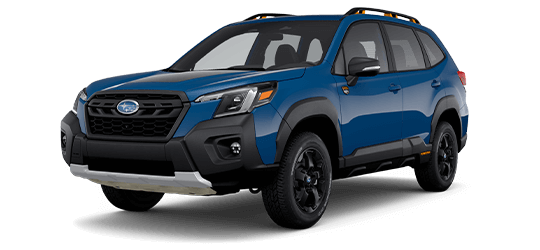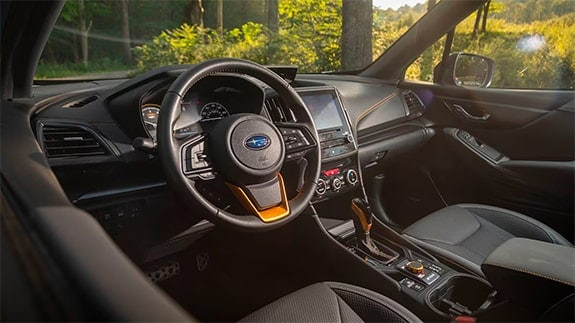How much is too much?
The old "20/4/10 rule" of car buying states that you should make a 20% down payment, have a loan no longer than four years, and have a total monthly car budget that does not exceed 10% of your take-home pay. But the reality is, given how expensive new and used cars are today, this rule is not only ignored but also outdated. This is why Edmunds recommends a 60-month auto loan if you can manage it. A longer loan may have a more palatable monthly payment, but it comes with a number of drawbacks, as we'll discuss later.
The trend is actually worse for used car loans. The average length of a used car loan in 2023 was 70 months, compared to 67 months in 2019. The most common loan term for a used car in the first quarter of 2022 was 72 months. Even though people are financing about $10,000 less for used cars than they do for new cars, it takes them roughly the same amount of time to pay off the loan.
"Consumers are battling two things," said Melinda Zabritski, senior director, solutions consulting at Experian. They are trying to get a good interest rate and a reasonable monthly payment. But a five-year loan often has a monthly payment that is too high for them, and they end up financing for a longer term even if it costs them more down the line, Zabritski said.
Is there any benefit to having a six- or seven-year car loan aside from a lower monthly payment? No. In fact, there are many reasons why you shouldn't choose a long car loan. Let's take a closer look.
Car fatigue
This is something that many people don't consider before taking out a long loan. We love our cars when they are brand-new, but when the romance fades, we're eager to trade them in for something else.
The average length that Americans hold on to their new cars is about 8 years, while used car ownership tends to be shorter given that the vehicle is older. The appeal of "new car smell" remains strong, however, even in the face of post-COVID inventory crunch, inflation and higher interest rates.
Let's take those average lengths of ownership and see what happens with various loan terms.
First, new cars: Imagine you have a 72-month auto loan and you get the itch to buy a new car right about at that common 100-month mark. You are only getting two years and four months without a car payment. If you took out an even longer 84-month loan and grew tired of your car in five or six years, you'd be stuck with a year's worth of payments for a car you couldn't wait to unload. If you were really desperate to dump the car, an alternative would be to roll the remaining months of the loan into your next car purchase. Edmunds data shows that some people may be doing just that.
The average age of a car when it's traded in for a new one is 5.5 years. But in November 2023, to use a recent example, about 55% of cars traded in were less than 5 years old. This includes a spike in trade-ins at around the two-year mark, indicating a shift in an earlier spike that used to occur at around three years, according to Ivan Drury, Edmunds' director of insights. This kind of trade-in is almost always a bad idea because it creates a longer loan commitment and higher monthly payments for the next car.
Now let's look at used cars: Say you buy a 3-year-old used car and pay for it with a 72-month loan, as most people do. And if you get tired of the car after about seven years, you'll have only enjoyed a year without car payments. If you choose to keep it, you're faced with a vehicle that is 9 to 10 years old.
"That's risky business when you consider wear-and-tear," Drury says. "You could be at greater risk of rolling the negative equity into your next car loan."
Contrast these situations with buyers who choose five-year loans. At the average ownership mark of 100 months, they have already enjoyed just over three years without car payments and have the freedom to sell the car whenever they want.
Higher interest costs
Higher interest rates are another reason to stick with a 60-month loan. The longer the term, the more interest you will pay on the loan, both in terms of the rate itself and the finance charges over time.
The average loan amount for a new car in 2023 to date is around $40,000, with an average interest rate of 7.2% and an average term of 69 months. That worked out to an average monthly payment of $734, a significant chunk of money in most household budgets. It's easy to see why someone would opt for a longer loan. Total interest paid over the life of loan? Almost $9,000.
Contrast that with an 84-month auto loan. The interest rate would be higher, which is common for longer loans. According to Edmunds data, the rate is averaging about 9.4% near the end of 2023. For our new car with a loan amount of $40,000, the monthly payment for the 84-month loan would be around $650. Still a significant chunk, but less than the shorter loan. But extending the loan adds nearly $5,800 over the life of the loan, a whopping amount that accounts for almost nine more monthly payments.
The extra time spent making payments on longer loans means it also takes longer to build equity in the car. The faster you get to equity, the more flexibility you have to sell it or trade it in.
Negative equity
A new car typically depreciates 15% to 20% in its first year. At the beginning of a car loan, you usually have "negative equity" in the vehicle: You owe more on it than it's worth due to that depreciation. This situation is also known as being "upside down" or "underwater." If you make a down payment that's too small, you put yourself further underwater. And you go deeper still if you opt for a longer loan term. The additional finance charges are to blame.
The time it takes you to build equity in the car varies depending on the vehicle you bought and your down payment. And equity is what you want: It gives you choices. When you have equity in the car, you can sell it if your other bills get out of hand or you lose your job. Negative equity, on the other hand, limits your options if you're in a money bind. It also ties you down if you get tired of your car before it's paid off. A buyer will only pay you what the car is worth, not what you owe on it. You're stuck with the balance of the loan.
Similarly, if you get into an accident and the car is totaled, the insurance company will only pay you what the car is worth at the time of the accident. Unless you have gap insurance or new-car replacement insurance, the remainder of what you owe will have to come out of your pocket.
Lower resale value
Resale value is another reason to steer clear of extra-long car loans. If you do plan on selling your vehicle when it is paid off, a 5-year-old car is more desirable and more valuable in the used car marketplace than one that's 7 years old. A 5-year-old car has lost about 48% of its value when new. A 7-year-old car has depreciated by about 59%. Put another way, the $40,000 new vehicle in our example will be worth roughly $20,800 after five years. It drops to $16,400 at the seven-year mark.
A dealership will always give you more money for the 5-year-old car. At that age, it's still a good candidate to become a certified pre-owned (CPO) car, which means the dealer will have a more valuable vehicle to sell.
On the other hand, a 7-year-old car is no longer a CPO candidate. Most automakers won't consider a car that's more than 5 years old. Likewise, if it has too many miles, it won't qualify for a CPO program. That means you will get far less for the car as a trade-in.
Alternatives to long loans
Let's say you want to buy a new car, but the monthly payments that are being quoted for the usual five-year loan are too high for you. That may be a sign that you're shopping outside of your price range. Take a look at the Edmunds "What can I afford?" calculator. You start by entering your ideal monthly payment, and with a few clicks, you'll see cars in your price range.
You also could consider buying an older used car. Interest rates are higher for used cars, but since these cars cost less, there's less to finance and the payments should be lower. Just be mindful of the loan terms. The used car market in 2023 remains inflated, reflecting both general inflation and recovering supply constraints, and it may be tough to find a good deal. The average used car payment at the end of 2023 was $562.
Final tip
While it's important to know what you can afford in terms of monthly car payments, that shouldn't be your only measurement of a good car loan. Take a look at all the numbers in the sales contract so that you are fully aware of what you are paying for the car.


 by
by 
